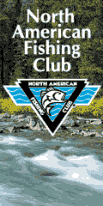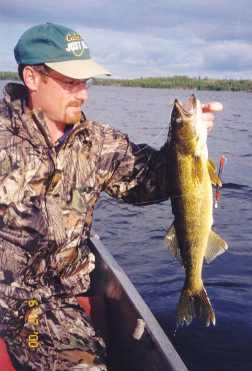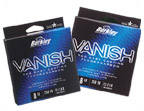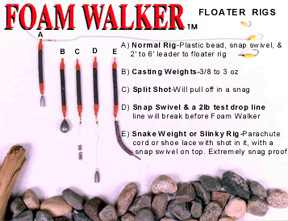 |
|||||

Click here Fishing & Hunting News 
|
By Bruce Mosher It seems like just about the time you establish a pattern, conditions change. Take springtime for instance, walleyes wrap up spawning and quickly switch focus to edibles. They flock to shallow structure where baitfish are easy to come by. Dial them in, and you’re the man. But as abruptly as the lake gods giveth, they taketh. Circumstances
change. Water temperatures rise; baitfish vacate; and our glossy-eyed
friends migrate to deeper structure. We’re left frustrated with the
challenge of divining new patterns in wilder places.
Shoreline Points Points are nature’s way of rounding critters up. Walleyes and a wealth of other species find the conditions quite inviting – good depth range, diversity of structure, ambush positions, cruising lanes, etc. In the fall, especially early and mid autumn, giant, lazily tapering points generate the most traffic – save the steep breaking stuff for late fall. I like ones featuring a sizable crown, or flat area on top, and a couple of breaks leading down the tip and flanks, maybe five to ten-feet over the crest, covering acres of water, with a couple of major steps leading down to the basin – perfect. During low light periods you can bet there’ll be walleyes ravaging the top, and in a stiff breeze, fish will hold there all day long. Speaking of gales, wind beaten points outperform wind protected ones. Zooplankton and algae are bulldozed into the point, as are baitfish, which feed on the former, and eventually, walleyes arrive to capitalize on the situation. Sand and Gravel Shoals Second in line to points come shoals. Like a point, they protrude into the lake, offering walleyes a food shelf, as well as depth and structure options – bigger the better. Unlike points, shoals seldom offer visible shoreline clues as to their whereabouts, although they are commonly divulged on hydrological maps. Again, onshore gales are beneficial, as are crosswinds, because they gather predators and prey. And the presence of rock is undoubtedly a bonus. The world’s greatest walleye structures offer rocks of sundry sizes, including boulders and loose rubble, which create traceable edges, feeding options, and protective cover. River and Creek Inlets For walleyes, tributaries double as breeding grounds and food funnels. Springtime sees a blend of spawning and gorging, while autumn is solely reserved for filling up the gas tank. As autumn ensues, minnows progress back toward incoming currents, and walleyes soon follow. They are drawn to both diminutive feeder creeks and raging rivers, but for my money, bigger wins. The mouths of sizable flowages simply offer more options, subsequently holding more fish. In particular, I focus on the heart of the main channel; first couple of bends heading upstream; and the washout/shoal area, which typically forms at the mouth. River and creek mouths are often reachable from shore. Structures near the mouth but on the main lake, such as bars and rock reefs, also deserve attention. Making them GO So now you know where to look for autumn’s walleyes. Let’s move
on to the catching. It’s evident that shallow-ranging walleyes aren’t there
for amusement, instead, it’s a serious issue of minnow eating. Why not
give them what they want? You started the season with minnows and now it’s
time to complete the cycle with finned forage. Put the leeches and
nightcrawlers away and procure a couple of scoops (you’ll need ‘em) of
shiners, small suckers, or chubs, which
lime green/chartreuse and hammered gold. Either option can be drifted or trolled, slowly, as long as they’re weighted properly. And this leads to a discussion of weights, or as they’re more commonly known, sinkers. Note: Bruce Mosher manufactures the Foam Walker and Ice Buster Bobbers.
Foam Walkers come in several weights. They’re effective for rigging walleyes
and catfish; Carolina and Drop Shot rigging bass; stream fishing for trout
and
Please visit these site sponsors |
||||
|---|---|---|---|---|---|


